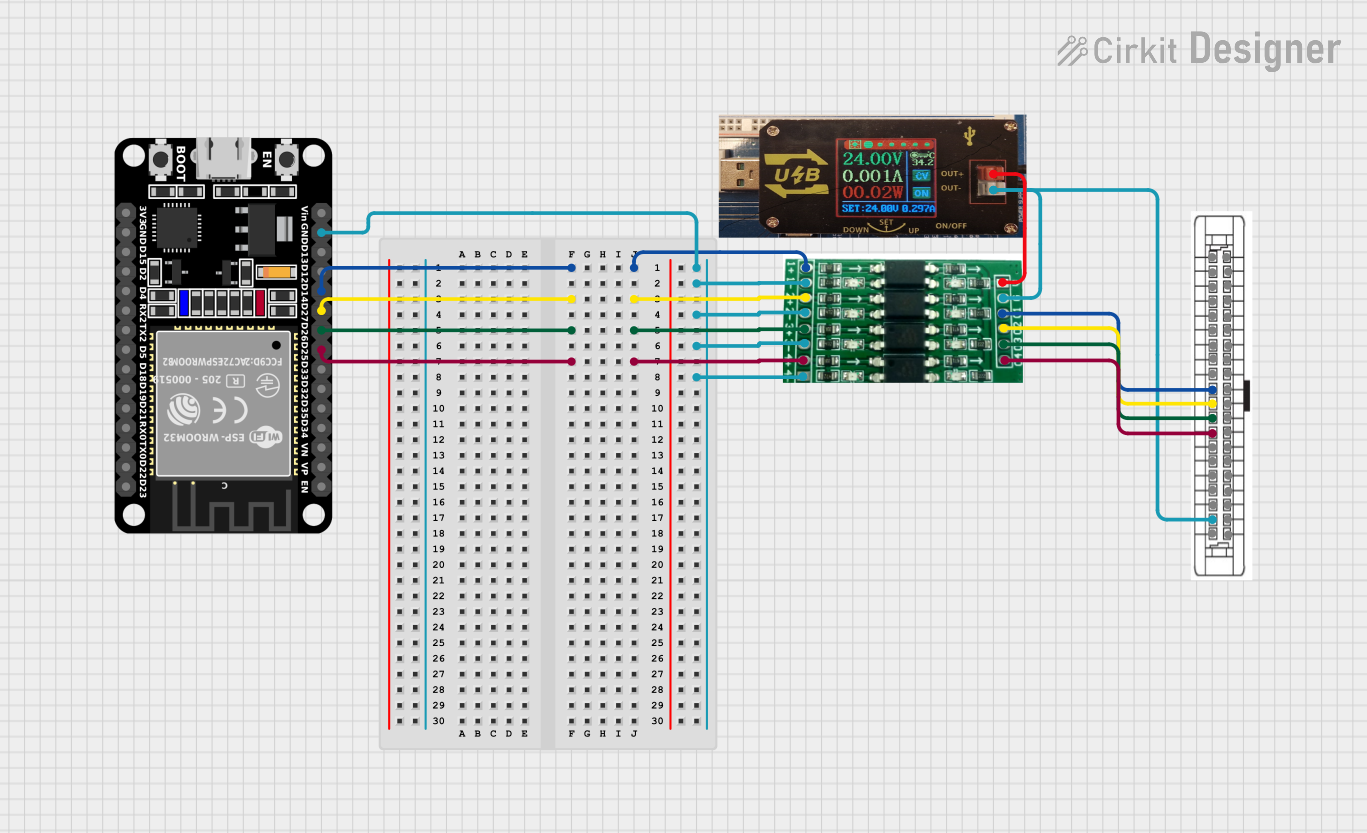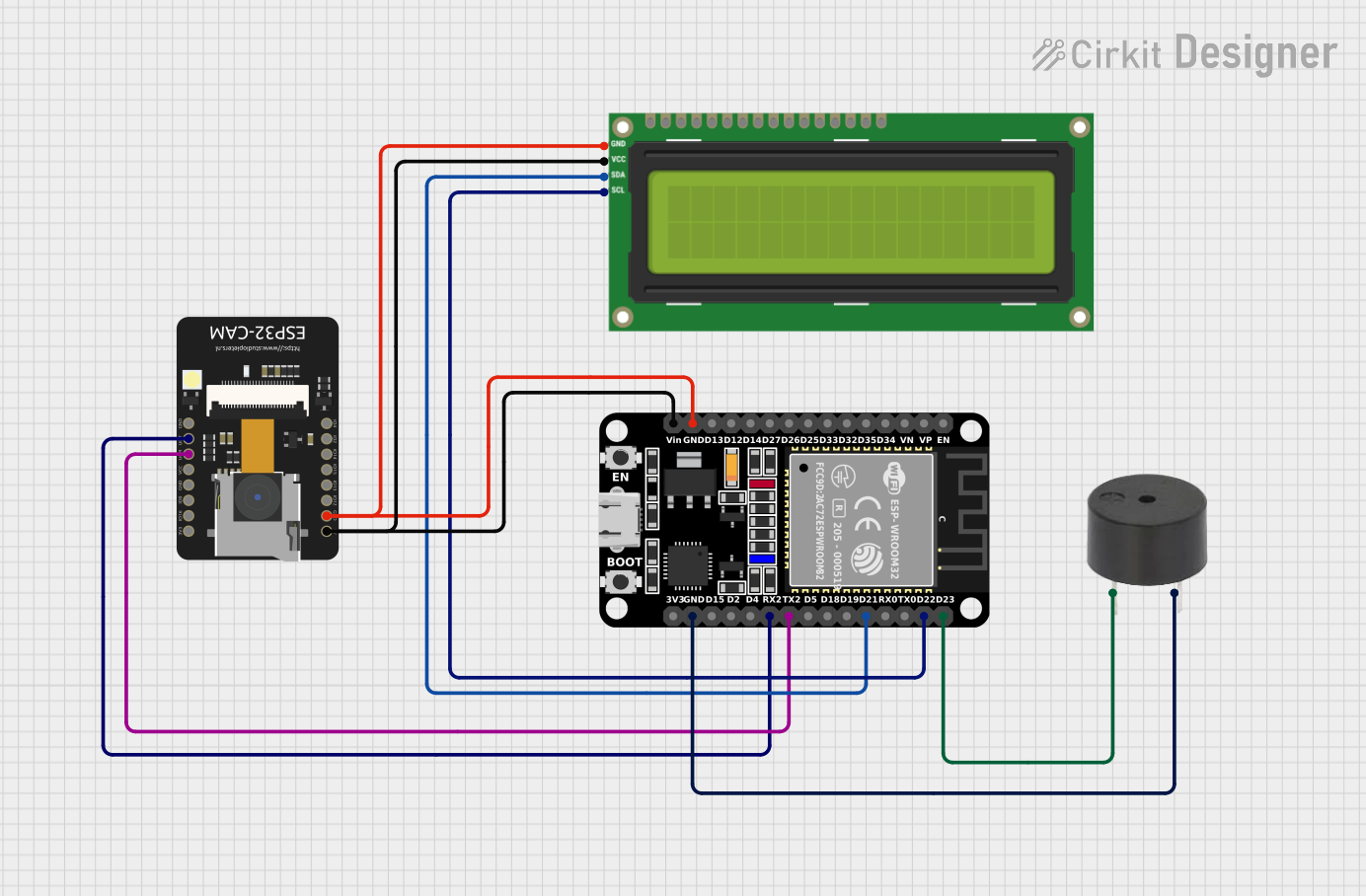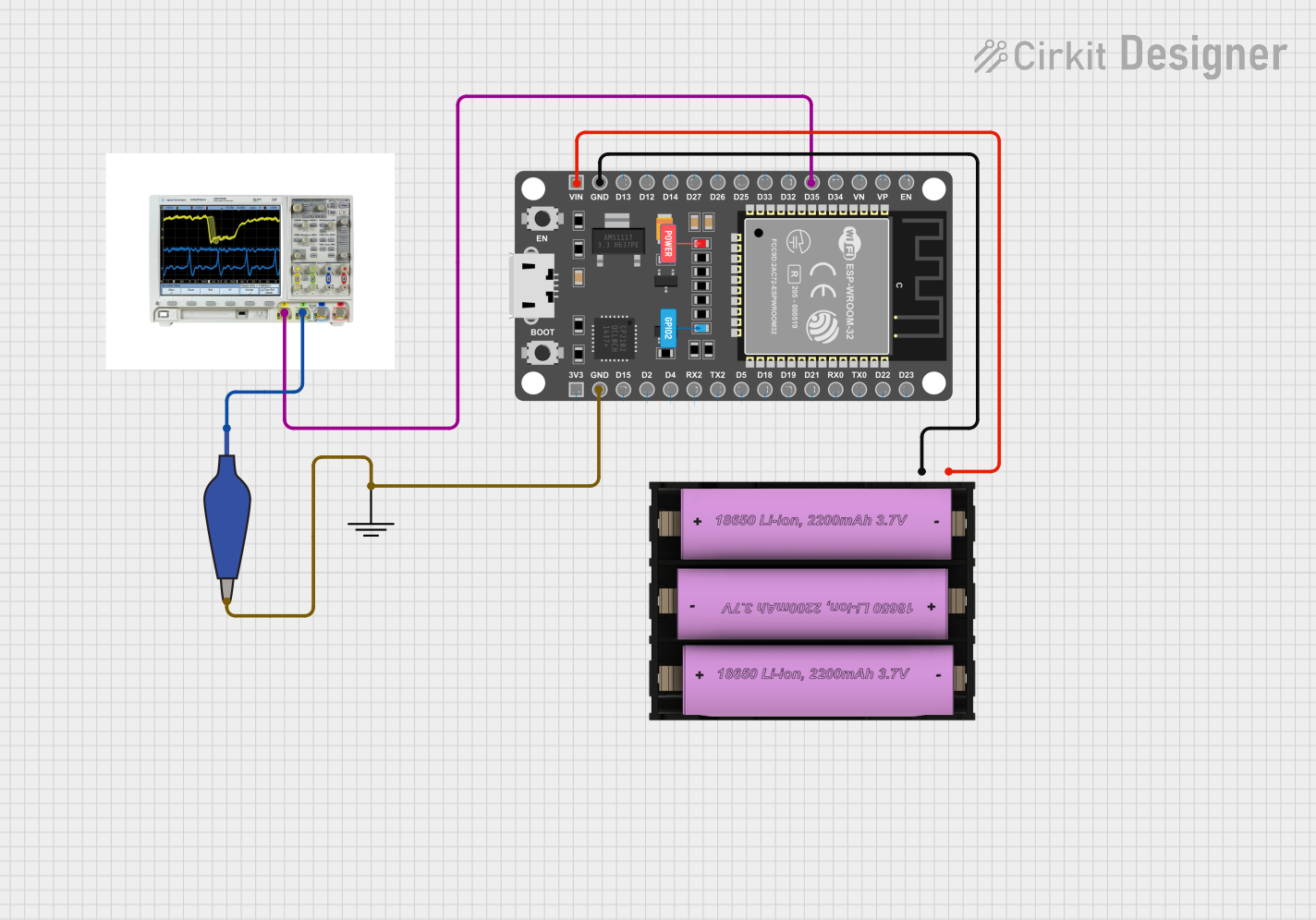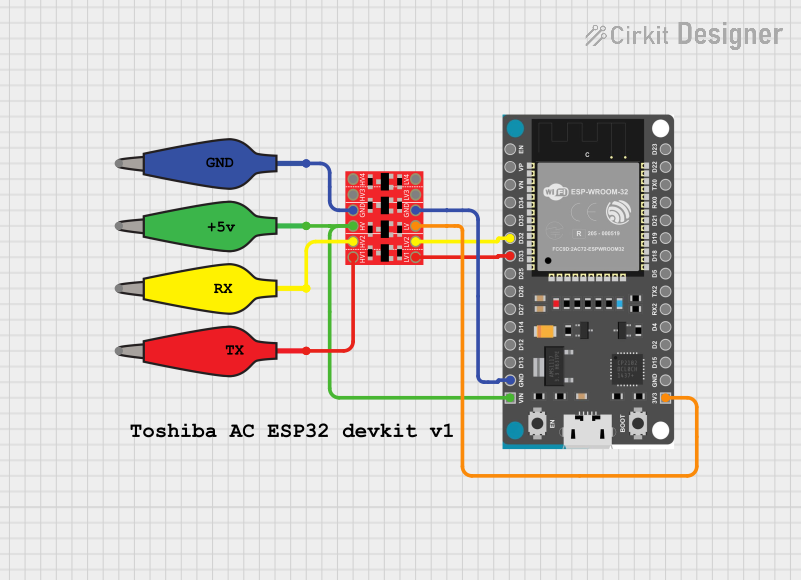
How to Use Freenove ESP32-E 40pin: Examples, Pinouts, and Specs

 Design with Freenove ESP32-E 40pin in Cirkit Designer
Design with Freenove ESP32-E 40pin in Cirkit DesignerIntroduction
The Freenove ESP32-E 40pin is a versatile microcontroller board based on the powerful ESP32 chip. It features 40 pins for a wide range of input/output (I/O) connections, making it suitable for complex projects. With built-in Wi-Fi and Bluetooth capabilities, this board is ideal for Internet of Things (IoT) applications, smart devices, and embedded systems. Its compact design and robust performance make it a popular choice for both hobbyists and professionals.
Explore Projects Built with Freenove ESP32-E 40pin

 Open Project in Cirkit Designer
Open Project in Cirkit Designer
 Open Project in Cirkit Designer
Open Project in Cirkit Designer
 Open Project in Cirkit Designer
Open Project in Cirkit Designer
 Open Project in Cirkit Designer
Open Project in Cirkit DesignerExplore Projects Built with Freenove ESP32-E 40pin

 Open Project in Cirkit Designer
Open Project in Cirkit Designer
 Open Project in Cirkit Designer
Open Project in Cirkit Designer
 Open Project in Cirkit Designer
Open Project in Cirkit Designer
 Open Project in Cirkit Designer
Open Project in Cirkit DesignerCommon Applications and Use Cases
- IoT devices and smart home automation
- Wireless sensor networks
- Robotics and control systems
- Data logging and remote monitoring
- Prototyping and educational projects
Technical Specifications
Below are the key technical details of the Freenove ESP32-E 40pin:
| Specification | Details |
|---|---|
| Microcontroller | ESP32 dual-core processor with Xtensa LX6 architecture |
| Clock Speed | Up to 240 MHz |
| Flash Memory | 4 MB |
| SRAM | 520 KB |
| Wi-Fi | IEEE 802.11 b/g/n |
| Bluetooth | Bluetooth 4.2 and BLE (Bluetooth Low Energy) |
| Operating Voltage | 3.3V |
| Input Voltage Range | 5V (via USB) or 7-12V (via VIN pin) |
| GPIO Pins | 34 (configurable as digital I/O, PWM, ADC, or DAC) |
| ADC Channels | 18 (12-bit resolution) |
| DAC Channels | 2 |
| Communication Interfaces | UART, SPI, I2C, I2S, CAN |
| Dimensions | 60mm x 25mm |
Pin Configuration and Descriptions
The Freenove ESP32-E 40pin has a total of 40 pins. Below is a table describing the key pins:
| Pin Name | Type | Description |
|---|---|---|
| VIN | Power Input | External power input (7-12V) |
| 3V3 | Power Output | 3.3V regulated output |
| GND | Ground | Ground connection |
| GPIO0 | Digital I/O | General-purpose I/O, also used for boot mode selection |
| GPIO2 | Digital I/O | General-purpose I/O |
| GPIO4 | Digital I/O | General-purpose I/O, supports PWM and ADC |
| GPIO12-15 | Digital I/O | General-purpose I/O, supports PWM, ADC, and SPI |
| GPIO34-39 | Input Only | Analog input pins (ADC only) |
| TXD0, RXD0 | UART | Default UART communication pins |
| SDA, SCL | I2C | I2C communication pins (default: GPIO21 for SDA, GPIO22 for SCL) |
| EN | Enable | Resets the chip when pulled low |
| BOOT | Boot Mode | Used to enter bootloader mode during programming |
Usage Instructions
How to Use the Freenove ESP32-E 40pin in a Circuit
Powering the Board:
- Connect the board to a computer or USB power source using a micro-USB cable.
- Alternatively, supply 7-12V to the VIN pin for external power.
Programming the Board:
- Install the ESP32 board package in the Arduino IDE.
- Select the correct board (
ESP32 Dev Module) and port in the Arduino IDE. - Write or upload your code to the board via the USB connection.
Connecting Peripherals:
- Use the GPIO pins for connecting sensors, actuators, or other peripherals.
- Ensure that the voltage levels of connected devices are compatible with the 3.3V logic of the ESP32.
Using Wi-Fi and Bluetooth:
- Use the built-in libraries (
WiFi.handBluetoothSerial.h) to enable wireless communication.
- Use the built-in libraries (
Important Considerations and Best Practices
- Avoid supplying more than 3.3V to the GPIO pins to prevent damage to the board.
- Use level shifters if interfacing with 5V devices.
- Ensure proper grounding when connecting external components.
- Use decoupling capacitors for noise-sensitive applications.
- When using ADC pins, note that the input voltage range is 0-3.3V.
Example Code for Arduino IDE
Below is an example code to connect the Freenove ESP32-E 40pin to a Wi-Fi network and blink an LED:
#include <WiFi.h> // Include the Wi-Fi library
// Replace with your network credentials
const char* ssid = "Your_SSID";
const char* password = "Your_PASSWORD";
const int ledPin = 2; // GPIO2 is connected to the onboard LED
void setup() {
pinMode(ledPin, OUTPUT); // Set GPIO2 as an output pin
Serial.begin(115200); // Start serial communication
// Connect to Wi-Fi
Serial.print("Connecting to Wi-Fi");
WiFi.begin(ssid, password);
while (WiFi.status() != WL_CONNECTED) {
delay(500);
Serial.print(".");
}
Serial.println("\nWi-Fi connected!");
Serial.print("IP Address: ");
Serial.println(WiFi.localIP());
}
void loop() {
digitalWrite(ledPin, HIGH); // Turn the LED on
delay(1000); // Wait for 1 second
digitalWrite(ledPin, LOW); // Turn the LED off
delay(1000); // Wait for 1 second
}
Troubleshooting and FAQs
Common Issues and Solutions
The board is not detected by the computer:
- Ensure the USB cable is functional and supports data transfer.
- Install the correct USB-to-serial driver for the ESP32.
Wi-Fi connection fails:
- Double-check the SSID and password.
- Ensure the Wi-Fi network is within range.
GPIO pins not working as expected:
- Verify the pin mode configuration in your code.
- Check for conflicting pin assignments.
Board does not power on:
- Confirm the power source is within the recommended voltage range.
- Check for loose or faulty connections.
FAQs
Q: Can I use 5V sensors with the Freenove ESP32-E 40pin?
A: Yes, but you must use a level shifter to step down the voltage to 3.3V for the GPIO pins.
Q: How do I reset the board?
A: Press the EN (Enable) button to reset the board.
Q: Can I use the board with MicroPython?
A: Yes, the Freenove ESP32-E 40pin supports MicroPython. You can flash the MicroPython firmware to the board and use it for programming.
Q: What is the maximum current output of the 3.3V pin?
A: The 3.3V pin can supply a maximum current of approximately 500mA, depending on the input power source.
This concludes the documentation for the Freenove ESP32-E 40pin.